Diablo IV Early Access/Open Beta First Impressions
Diablo IV’s beta sessions gave players the opportunity to experience the first act of the campaign with all five classes. Here are some first impressions of the game in anticipation of the launch.
Diablo IV’s beta sessions gave players the opportunity to experience the first act of the campaign with all five classes. Here are some first impressions of the game in anticipation of the launch.
After years of anticipation, fans of Diablo finally journeyed back to the dark world of Sanctuary. With Diablo IV’s launch just two months away, we were given the opportunity to immerse ourselves in the first act of the campaign through Early Access and Open Beta. Players got to try out all five classes and briefly experience Blizzard’s new take on their ARPG series.
Aside from the server issues, I generally found the beta experience quite enjoyable, as I had a lot of fun playing around with all the classes. Nonetheless, as the initial excitement wore off, a few issues became apparent, which raised concerns about the game’s readiness for launch. While the beta only offered a look at the first 25 levels, there’s still a lot we can glean from the limited playthrough. Here are some of my takeaways and impressions of the past two beta weekends and what I hope to see for the game’s launch.
Starting off, we can see that players can finally customize their appearance and gender in Diablo. I like this addition to the franchise, especially with the apparent emphasis on multiplayer gameplay for Diablo IV. Having a unique look to stand out amongst other players while exploring the open world is undoubtedly a great new feature. However, it does feel like the current customizable options featured in the beta are rather lackluster. In particular, facial and hair options appear to be somewhat limited and unremarkable across all classes and genders. Hopefully, Blizzard will add more customizable options in the future, but for now, it’s a good start.
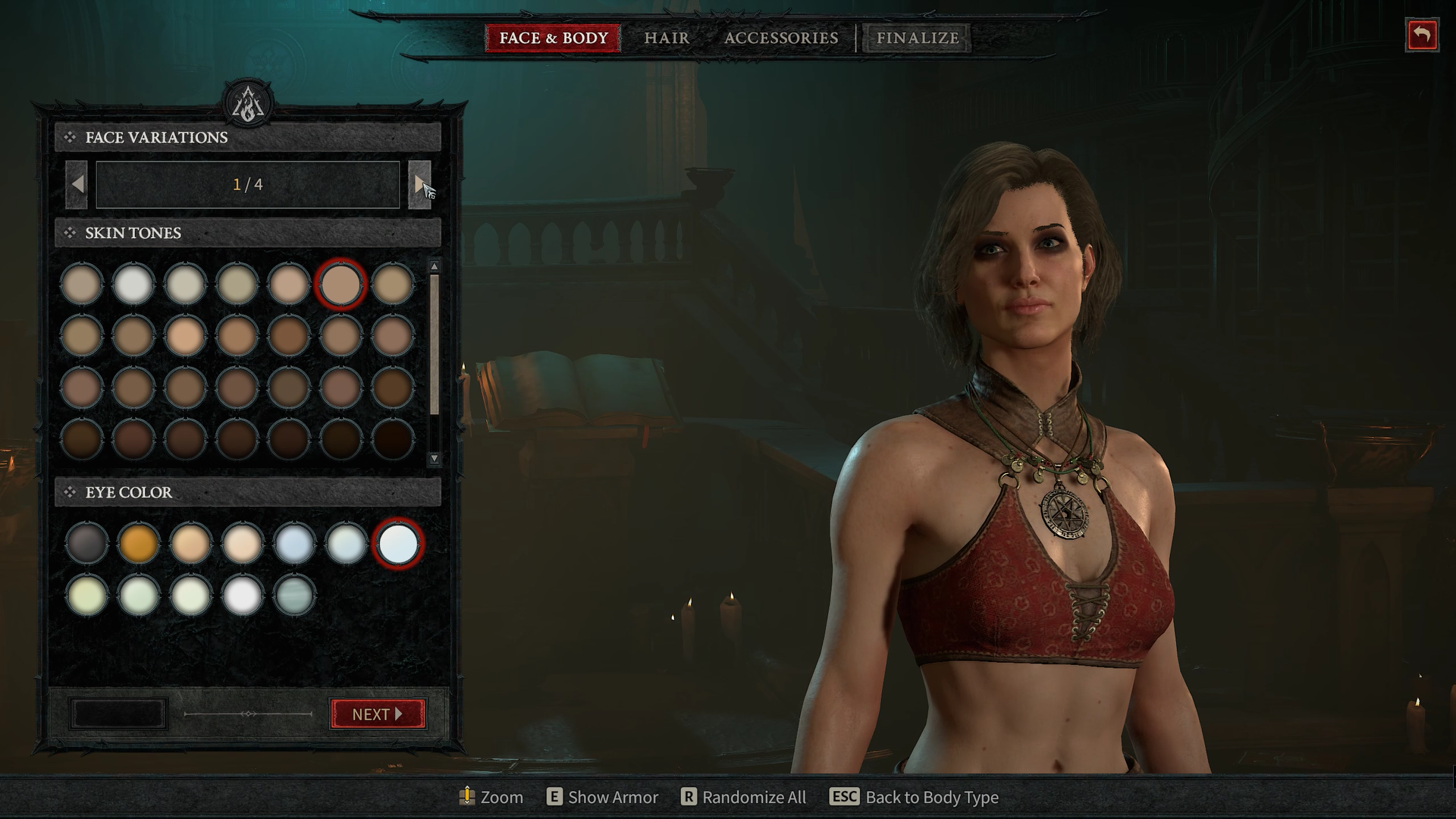
Getting into the game, Diablo IV stands in stark contrast to the lighter aesthetics of its predecessor and the opening scene really sets the tone for the rest of the beta. The dark and gritty aesthetic is surprisingly well done, and Blizzard’s art team should be applauded for the highly detailed environments. The lighting and shadows serve to reinforce the idea that Sanctuary is a treacherous world, with dangers lurking around every corner. I especially love the level of interactivity between my character and the environment, from the residual impact of skills on the snow to the splattered blood on my character. The details in the game are truly praiseworthy and I’m glad Blizzard added various vista points throughout Sanctuary to show them off.
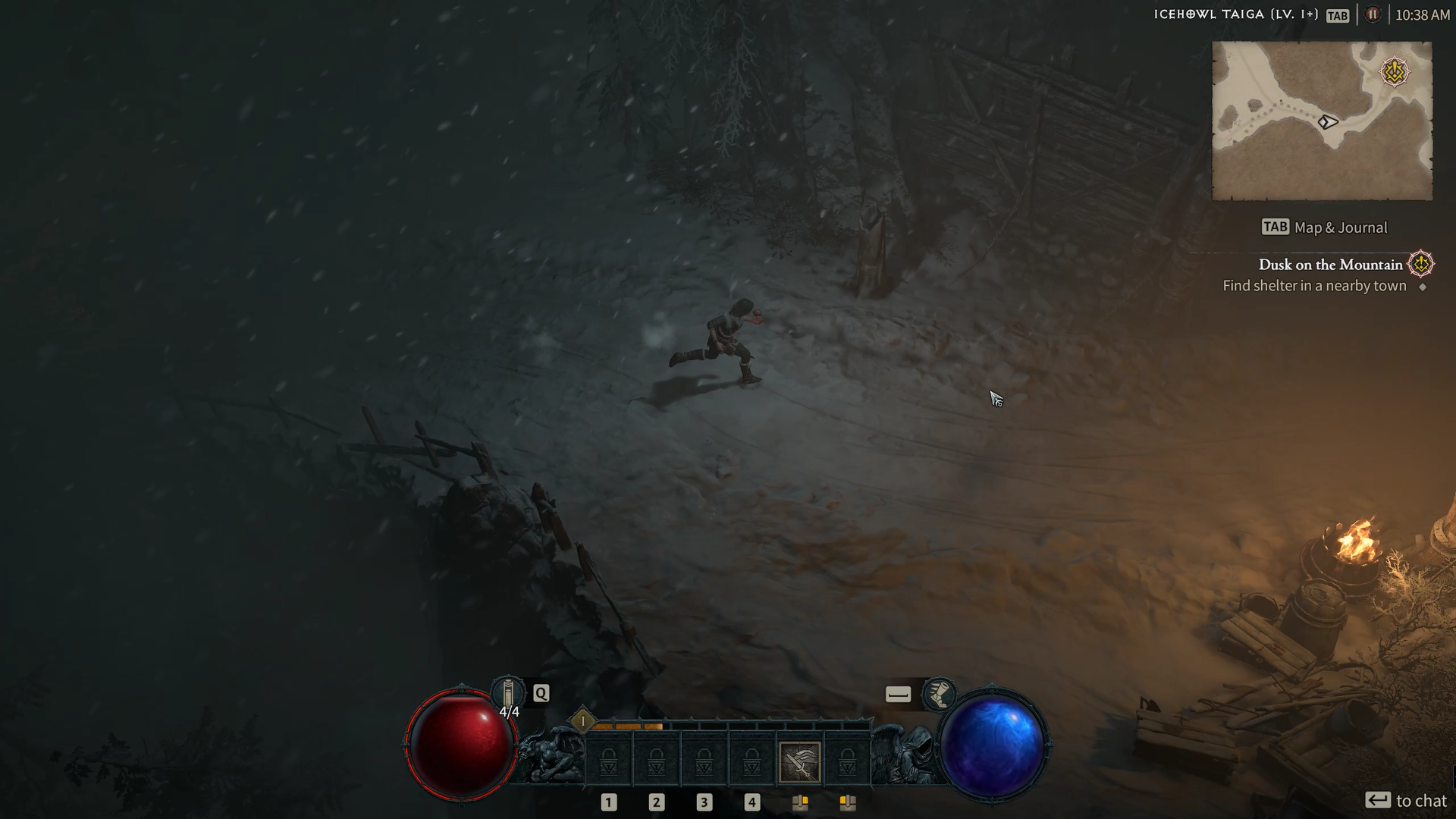
While I did like Diablo III’s lighter colors, the new aesthetics feel more immersive and lead to greater enjoyment of Diablo IV’s story. Along with the aesthetics, the music and sound design further enhances the experience, adding to the sinister and mysterious atmosphere of Sanctuary. Blizzard has certainly hit the mark when it comes to sound design, from footsteps in the snow to the impact of spells and the cries of enemies, each contributing to greater gameplay enjoyment. As for the music, I like its subtlety in conveying the feeling of despair in the open world while not being overly intrusive as you explore.
Although we’ve only gotten to experience one Act so far, I found myself quite invested in the main story and eager to learn where it leads. The main story so far may be simple, with occasional lackluster dialogue, but overall, it did great in holding my attention. Unfortunately, the same can’t be said about most of the side quests, but that’s honestly not a big deal.

A key component of any ARPG is combat, and Diablo IV does not disappoint in this regard. I found the combat to be incredibly fun, smooth, and responsive, especially with the addition of the ‘Evade’ ability for all classes. The visual effects and sound design combine to create a highly satisfying experience when using various skills. Some of my favorites include many of the Sorceress's fire skills, especially her ultimate, ‘Inferno’, which is just visually stunning. I found myself randomly spamming skills like Necromancer’s ‘Corpse Explosion’ and Rogue’s ‘Barrage’ just to hear the amazing sound effects.
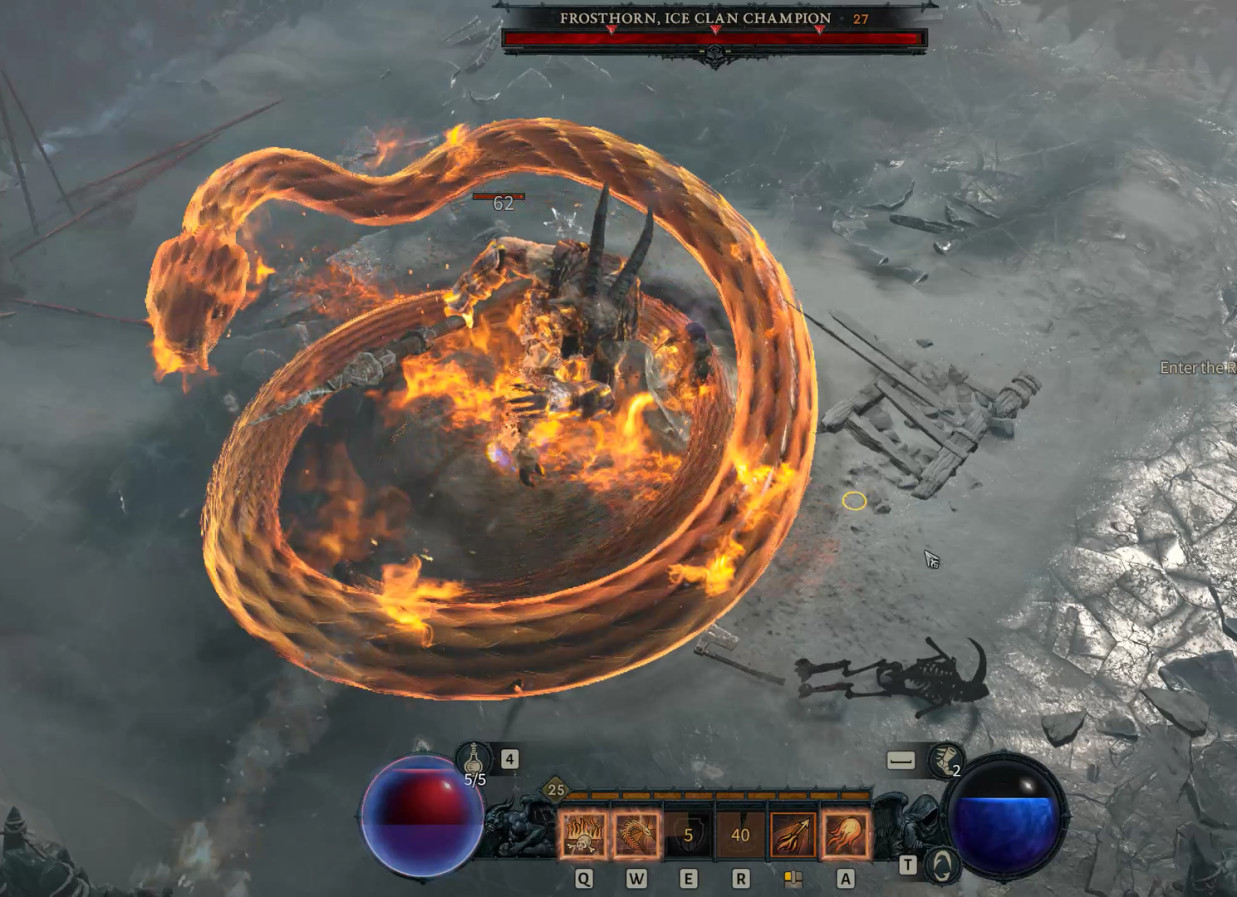
I found each of the five classes to be unique and intriguing and thoroughly enjoyed their different playstyles. The concept that captivated me the most was Class Mechanics, which are class specific systems that further augment their gameplay. For instance, Sorceresses have Enchantments that grant passive effects based on the chosen skills. Necromancers possess the Book of the Dead, which is linked to various undead they can summon or sacrifice. Rogues have different Specializations to choose from to change up their playstyle. Barbarians have the Arsenal System that allows them to equip and use four different weapons for various skills, which we couldn’t fully explore in the beta. Druids have the Spirit Animal System, but unfortunately, it was unavailable during beta.

Visually they were all a joy to play, but it became apparent that the balance of these classes, at least in the early game, felt way off. On Sorceress and Necromancer, I had no problem cruising through the first 25 levels. It was essentially smooth sailing with my Hydras and Skeletons doing most of the work. Rogue ramped up quite nicely with its high mechanical playstyle and was a treat to play with all its mobility and imbuements. Barbarian and Druid, on the other hand, felt comparatively weaker in terms of damage and survivability. What makes this feel worse are the abundance of melee unfriendly fights that make playing Barbarian and Druid feel lackluster in comparison.
While balance in the end game is what ultimately matters the most, the overall gameplay experience does not benefit from drastic disparities between classes at any point in the game.
Diablo IV’s new Skill Tree is organized into seven groups, beginning with Basic Skills and Core Skills, followed by three class specific sets of Skills, culminating in Ultimate Skills and Passive Skills. Skill Points are predominantly earned through leveling, with additional points obtainable through renown and item effects. Advancing down the tree requires prerequisite allocation of points in preceding groups

Although I am happy that Diablo IV has returned to Skill Trees, I can’t help but feel underwhelmed by the generic and uncreative modifiers found on many of the nodes. Blizzard seems to have moved much of the creativity and power from the tree to Legendary Aspects on items. Personally, I am not a huge fan of this design as I feel it strongly discourages experimentation and forces players to rely on RNG to determine their builds. Hopefully the Paragon system, which was unavailable in beta, contains more customizability.
Another concern with the Skill Tree is the potential high cost of re-allocating points. As you progress to higher levels, the cost of switching points gets drastically higher. This may get quite expensive in the end game, where gold is essential for itemization. Additionally, it’s aggravating to alter nodes at the top of the tree due to prerequisite points for lower nodes. Players must either redo all their points or waste time jumping between the ends of the trees, removing and re-adding points. A more user-friendly approach could be to gray out the tree while players freely adjust their points, and then allow them to confirm the changes once all prerequisite points are met.
Items in this game function similarly to those in Diablo III. Legendary items possess unique effects that augment character powers, which are now referred to as Aspects. Aspects are stored in the Codex of Power and can be collected through various activities, such as completing dungeons. These effects can then be applied from the Codex of Power to Rare or Legendary items at the Occultist. Aspects can also be extracted directly from Legendary items, which are then stored in your inventory for one-time use. Additionally, players can enhance their items by upgrading and enchanting them to increase Item Power and stats. Gems essentially function the same as they did in Diablo III.

I find the crafting and upgrading systems to be satisfactory in Diablo IV. While not mind-blowing, it is simple to understand and allows a bit of customization. The systems do appear to be quite costly in terms of gold, which can mean greater importance in the currency compared to the previous game.
My primary concern, as previously mentioned, is with the Aspects themselves. Many of the Aspects are skill specific while being incredibly powerful. This can shoehorn players into certain builds, especially when items also give additional points to specific skills. Ideally, I would prefer Aspects to have more generic effects that can be applied to a broader range of builds. This way, players can experiment with various skills without having to constantly grind for and upgrade new gear. I believe that most of these skill specific Aspects belong in the Skill Tree or Paragon system, where the bulk of the creativity should happen.
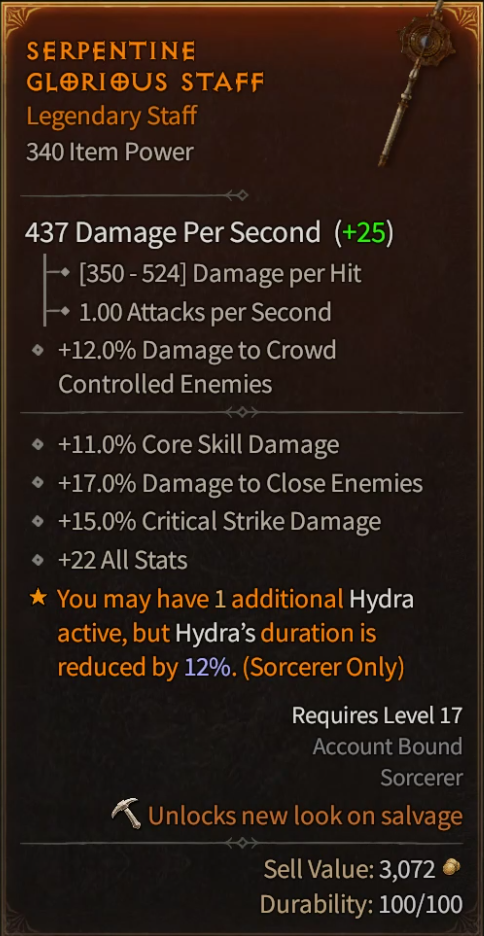
The dungeons are visually impressive, consistent with the game’s overall aesthetic. However, there are some issues that detract from the experience. In particular, the dungeon objectives and layouts can become repetitive and tedious, often requiring excessing backtracking to complete. For example, the often overused task of retrieving keys and objects in opposite directions before returning to the center to unlock the boss room can be tiresome.
Moreover, some dungeons require you to eliminate every enemy and collect all the essences, which is quite time consuming. It is frustrating to waste time roaming around trying to locate the last few enemies or a lone essence that was missed earlier. In addition, after doing all the tedious work, you are met with the exact same final boss as another dungeon you did earlier. In some dungeons, there is no final boss to confront, leaving you feeling confused and unsatisfied after accomplishing the objectives.
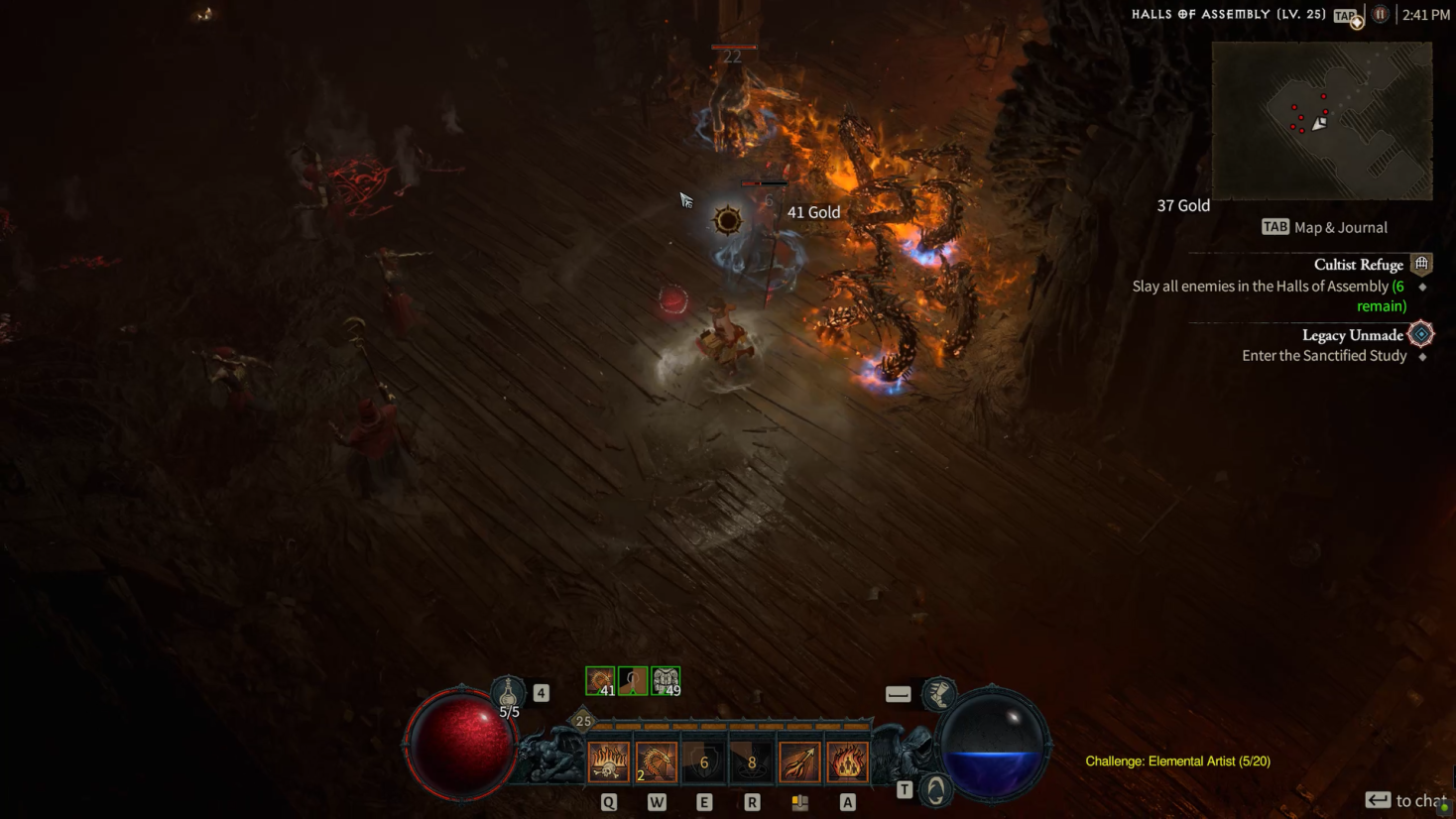
Another small concern I have with some of the dungeons is the occasional lack of density, with some having stretches of area where you encounter no mobs at all. Combined with the aforementioned issues, this can often make the game feel like a running simulator. While it is possible that these encounters may improve in other regions not accessible in the beta, it is still concerning when a portion of the game employs this design. The early game experience is crucial for many players and can ultimately influence their decision to continue playing or not.
The Renown system is an interesting feature in Diablo IV that encourages exploration in the open world and grants players rewards such as gold, EXP, Skill Points, and Paragon Points. It’s reminiscent of Lost Ark’s Collectibles and Adventurer’s Tome, providing additional power to the characters. While I appreciate horizontal progression systems that encourage open world exploration and completion, I am concerned about how this will work with seasonal resets. Will players need to redo this process every season? This could potentially become tedious, requiring players to rediscover ‘Altars of Lilith’ or redo side quests across all regions, not just Fractured Peaks. Hopefully, this feature will be account-wide and retain most of its progress across different seasons

One of the new approaches Blizzard has taken is an open world multiplayer experience. Pretty much like an MMORPG, players can see each other running around Sanctuary and participate in various events together. Additionally, Blizzard have added level scaling to Diablo, which essentially adjusts the difficulty of enemies according to your character’s level. This allows players to explore any area, regardless of their level, and encounter players of various levels.
While I’m personally okay with Diablo being essentially an MMO, I can understand how aspects of this can be unenjoyable for some players. For example, level scaling can ruin a sense of progression as players rarely feel stronger when they level up. It would be nice to add an option to opt out of the multiplayer open world and turn off the level scaling.
One of the main features of multiplayer is the opportunity to team up and fight world bosses in the open world. During beta, we had the chance to fight Ashava, a level 25 world boss unaffected by level scaling. In each server shard, only 12 players may face Ashava simultaneously. This posed a significant issue as any player, regardless of level, could walk into the area and occupy one of the 12 slots. Having low level players that contribute no damage to the boss can easily cause the encounter to fail. Currently, the game only permits four people to party together, meaning there is no control over who the other eight people are in the shard. I feel like Blizzard should allow three separate groups to link up with each other to tackle world bosses, or at the very least restrict low-level players from entering the area.
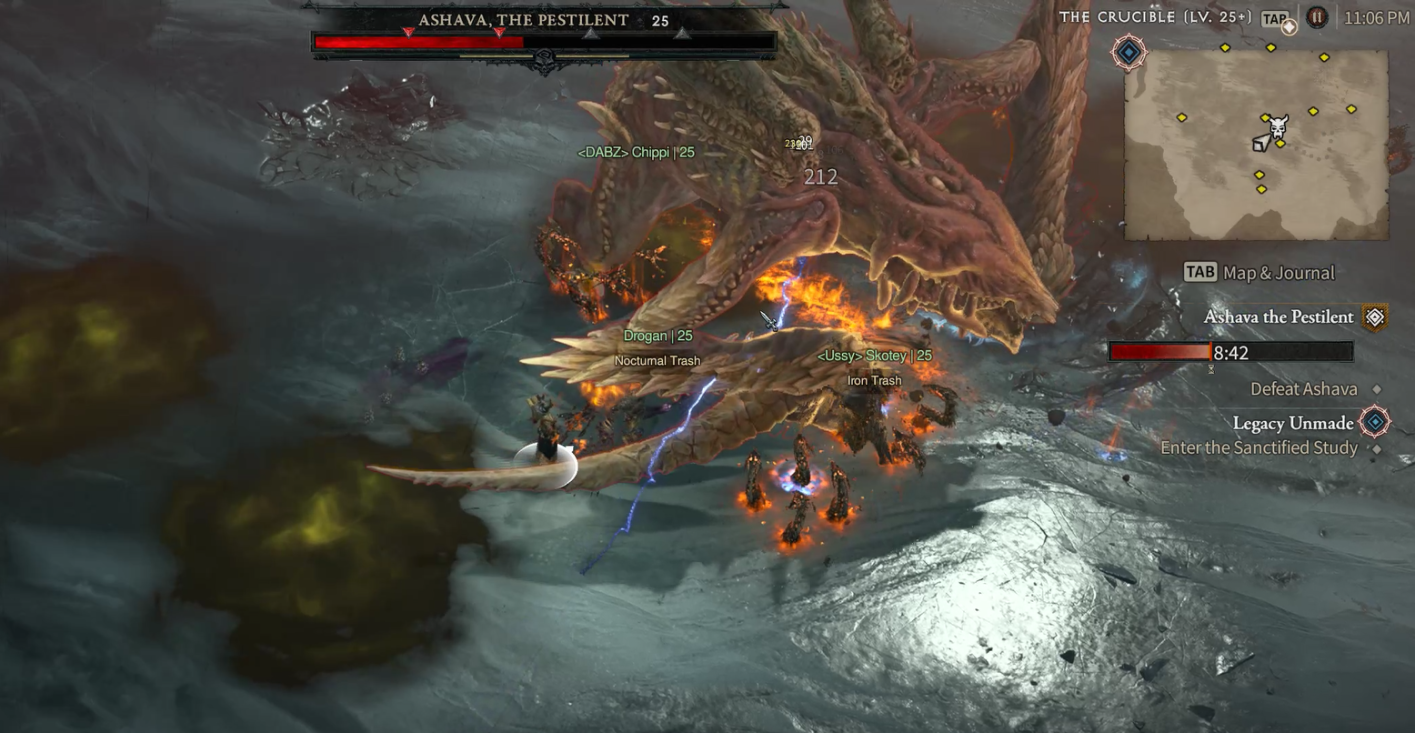
Regarding the fight itself, I unfortunately could only experience it on Sorceress and Necromancer due to the limited spawns of Ashava. For these two classes, the fight was unfairly easy, as I was able to damage the boss from far away avoiding most of its mechanics. I can only imagine how frustrating Ashava would be as a Barbarian or Druid with how unfriendly the mechanics seemed for melee.
One of the weakest elements of the game pertains to its User Interface, and there are several issues that I have regarding this. One of the most prominent ones is the lack of a transparent map overlay to aid in navigation while moving. The fact that I have to constantly interrupt my character’s movement and obscure critical information, such as health, by opening a full-screen map is a major annoyance. This is especially problematic in dungeons, where my character can be vulnerable while I figure out a direction to head in.

This leads to a similar issue with many of the game’s features opening up in full-screen, such as the quest journal, clan, and friend list. In addition, the game does not allow us to track more than one quest at a time. This forces us to open the full-screen journal, which for some reason is attached to the map, just to check the status of other quests. These are puzzling choices when Blizzard’s other games, Diablo III and World of Warcraft, both have social menus and quest journals that open in pop-up boxes.
I can only assume these designs were primarily tailored toward console players, with a focus on enhancing accessibility and smooth menu navigation on controllers. This design approach seems to be reflected in other elements of the interface, including the character profile, the Action Wheel, and item tooltips, which can sometimes hinder quick access to information. In my opinion, the overall UI does not live up to the game’s overall aesthetics, which can be distracting from the immersive experience, and occasionally make me feel like I’m playing a mobile game. While I understand Blizzard’s attempt to cater to a broad range of devices, they should at least provide an alternative UI option in the settings that better suits PC users.
Finally, here are some more QoL changes that I would love to see happen. Although not game breaking, I feel many of these changes can significantly improve overall game experience.
Provide players the option to zoom the camera out further. This was automatically done during the world boss fight, which can be a nice option to have for the rest of the game.
Skill slots should be unlocked from the beginning. Since skills are already restricted by levels and points, there is no reason to lock the slots. Allow players to freely adjust what keybind they want their first few skills to be on.

Have an option to skip voiced dialogue when talking to NPCs. During beta, it was inconsistent whether voiced dialogues could be skipped right away. This can become monotonous after multiple playthroughs, so giving players the option to bypass them would be appreciated.
Allow us to automatically unlock the appearance of an item we loot without having to salvage it. Alternatively, allow players to gain the appearance when extracting Aspects as well.
While it’s nice that we can finally separate Move, Interact, and Basic Skill into separate keybinds, it would be nice to have the option of combining just Move and Interact into the same keybind.

Allow us to zoom out further for the Skill Tree. Even with the expanded view, it is hard to get a quick overview of what is currently selected.
Expanding inventory space and creating a separate tab for gems would also be a significant improvement. Clearing out inventory after each dungeon can become tedious, so having additional space would be very welcome.

Having a grace period when loading in and out of instances, so enemies can't attack players before they are fully loaded. Dying to enemies in Hardcore mode while loading can be unfair, especially when this can be abusable in multiplayer.
Despite the concerns, I still eagerly await the opportunity to experience all the classes at max level. While I believe Diablo IV has the potential to be a very good game, I do have reservations regarding its readiness for launch. Realistically, it may take a season or two for the game to find its footing. Nevertheless, I am excited to play through the campaign and discover more of Sanctuary. Ultimately, I just hope the game has a seamless launch, devoid of any server difficulties.